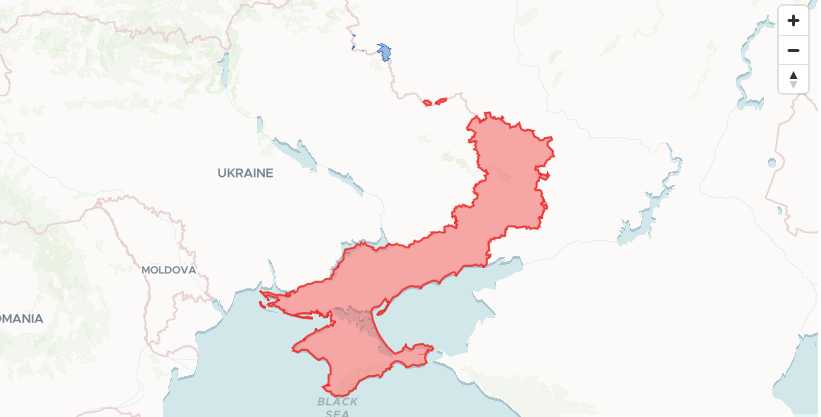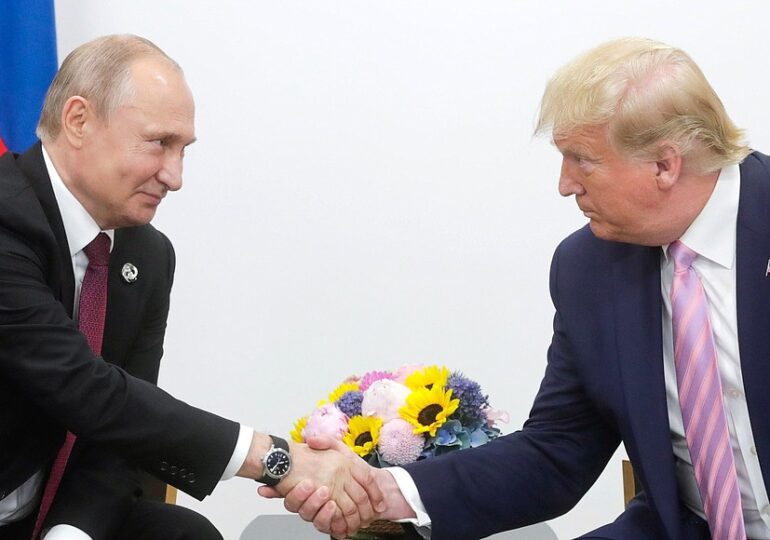There are few details known about how President-elect Donald Trump plans to end the war in Ukraine. One option believed to be on the table, namely the effective freezing of the conflict and the creation of a demilitarized zone, raises many questions.
Donald Trump has insisted that he will end the over two and a half years of war in Ukraine in a single day, believed to have caused over a million casualties. He has not clarified how he intends to do this, but Moscow and Kiev remain seemingly irreconcilable in their positions regarding peace negotiations.
One of the ideas Trump's team is considering is delaying Ukraine's NATO membership by at least 20 years, while Washington would continue to send weapons to Kiev to deter a new Russian attack, according to three sources close to Trump cited by the Wall Street Journal.
Thus, the conflict would be frozen, with Russia retaining approximately a fifth of Ukrainian territory, and a demilitarized zone of nearly 1,300 kilometers would be created to delineate the territories under Kiev's and Moscow's control.
According to the cited newspaper, the demilitarized zone would likely be controlled more by European forces rather than American forces or organizations supported by the United States, such as the United Nations.
Why Ukraine Does Not Want a Demilitarized Zone
It is not clear where a demilitarized zone would be established, although Vice President-elect JD Vance has said that a "peaceful resolution" would likely mean the current front line between Russia and Ukraine.
"The current front line" is, however, a rather ambiguous formulation. Normally, the front line considered would be that of the day or the period close to the signing of the peace agreement and could differ greatly from the situation that can be seen on the map today, as Russian forces continue to advance in many sectors and could be incentivized to advance even further for Russia to seize as much territory as possible.
Moscow has so far captured about 20% of Ukraine, including areas from the four regions it has partially annexed - Donetsk, Luhansk, Kherson, and Zaporizhia. In addition, the Kremlin has controlled Crimea, the peninsula in southern Ukraine, since 2014.

The Washington Post wrote in April, citing sources from Trump's team, that the Republican wants to end the war in Ukraine by pressuring Kiev to give up Crimea and the eastern Donbas region, which includes Donetsk and Luhansk.
Kiev has promised to recapture all the territory occupied by Russia, and President Volodymyr Zelensky has ruled out ceding territories to Russia in his victory plan presented in recent months to Ukrainian parliamentarians and allied country leaders. He also stated his opposition to a frozen conflict, insisting that Kiev now needs an invitation to join NATO.
Moreover, Zelensky also has public support in this regard. 58% of Ukrainians oppose any territorial concessions to Russia, according to an opinion poll conducted in early October and released on Tuesday by the International Sociology Institute in Kiev, reported by Kyiv Post.
Dan Rice, former adviser to the chief commander of the Ukrainian army, told Newsweek that it is very unlikely that Kiev will accept a short-term ceasefire and significant European forces will be needed along the Russian-Ukrainian border to prevent Moscow from attempting another attack.
Bryan Lanza, who worked on Trump's election campaign, told the BBC over the weekend that the new administration taking office in January will ask the Ukrainian leader for "a realistic vision for peace." "And if President Zelensky comes and says, 'Well, we can only have peace if we have Crimea,' he is showing us that he is not speaking seriously," he added.
"Crimea is gone," a Trump spokesperson added, who later stated that Lanza was not speaking on behalf of the president-elect.
Also, it has not been decided whether the demilitarized zone would include the internationally recognized border between Russia and Ukraine. Kiev's presence in the Russian Kursk region further complicates this.
It remains to be determined how wide the zone would be and whether European armies would agree to ensure security there.
Korean Model, Hard to Replicate
Demilitarized zones have been created in the past, the most well-known being the strip of land separating North and South Korea. The DMZ running through the peninsula has been in place since the end of the Korean War in 1953, and the conflict has never technically ended.
"Demilitarized zones sound better than they work in real life," said Mark Cancian, a retired U.S. Navy colonel and senior advisor at the American organization Center for Strategic and International Studies. "The problem is enforcing the law and ensuring the zone remains free. Otherwise, it makes no sense," he told Newsweek.
The Korean model has been successful because Pyongyang and Seoul can communicate with each other, but also because if one army were to enter the demilitarized zone, the other party would gain the power to respond militarily, the expert explained.
A Ukrainian demilitarized zone is not necessarily a bad idea, but it is difficult to implement in a way that would be successful, Cancian believes.
A member of Trump's team, speaking anonymously to the WSJ, said that the U.S. will not undertake a mission in a demilitarized zone in Ukraine: "We are not sending American men and women to support peace in Ukraine. And we are not paying for it. Let the Poles, Germans, British, and French do it."
- Trump Prepares a Revolution in NATO: The United States Is Not an ATM. It Helps Europe Only in Crisis
In these conditions, Cancian cannot imagine a European military force participating in the demilitarized zone with Russia's agreement. The commitment of ground troops in the war effort has largely been an anathema for NATO states, and Kiev has not requested this.
There is also the unfortunate precedent of the demilitarized zone that eventually collapsed in Vietnam when a mission of neutral countries, though "ineffective," monitored the zone, Cancian recalled. Diplomatic efforts could create a neutral force that could be up to the task, but this would be very difficult, he assessed.
Putin Would Benefit from a Buffer Zone
If an agreement were to lead to the creation of a demilitarized zone, it would only be possible under Vladimir Putin's conditions, "and he will use it as a front line for the next invasion of Ukraine in five, ten, 15 years, after his army has regrouped and learned the lessons it is learning in Ukraine," emphasized Karolina Hird from the Institute for the Study of War in the U.S. (ISW).
"Establishing a demilitarized zone, no matter how it looks, will give Russian forces an excuse to rest, reset, and plan their next invasion," Hird told Newsweek.
Putin has not shown signs that his objectives of occupying all of Ukraine have faded, said Hird, adding that a demilitarized zone "almost legitimizes" the occupation of parts of Ukraine and will strengthen the Kremlin's control over Ukrainians living in these territories.
"A demilitarized zone would not end the war on anyone's terms except Russia's," she emphasized.
T.D.

